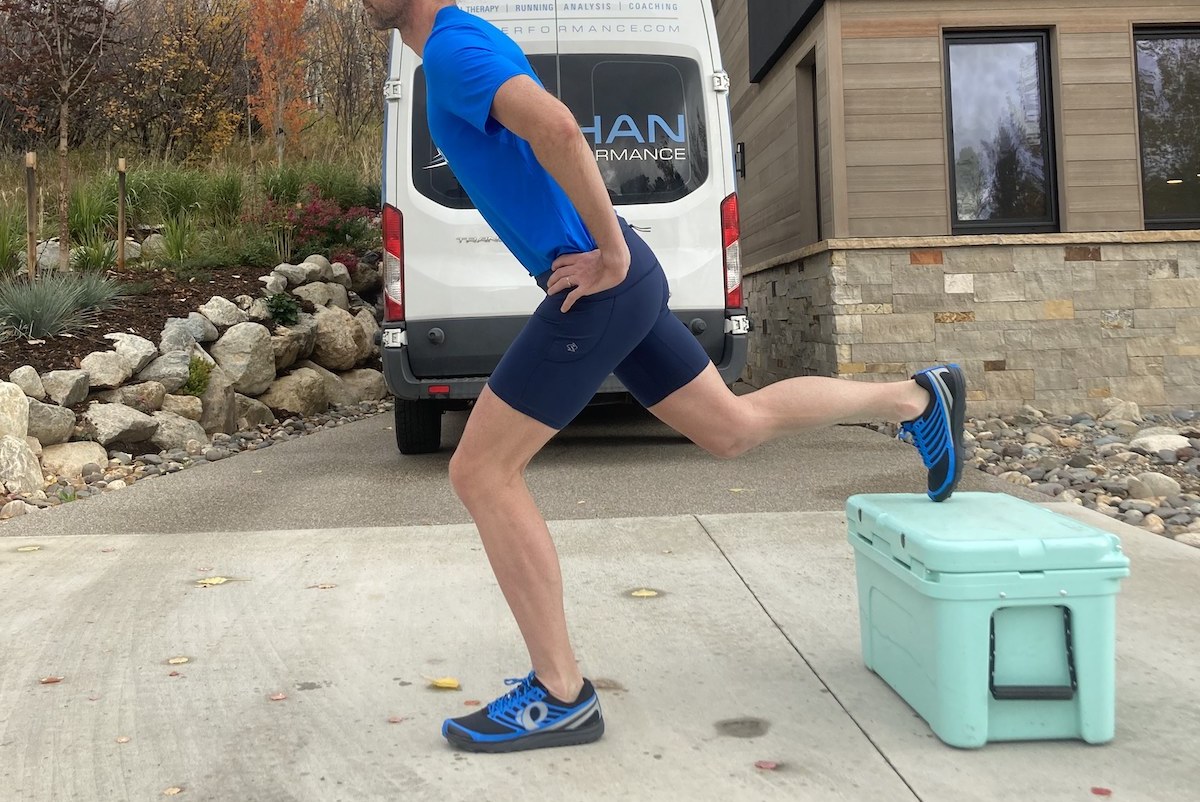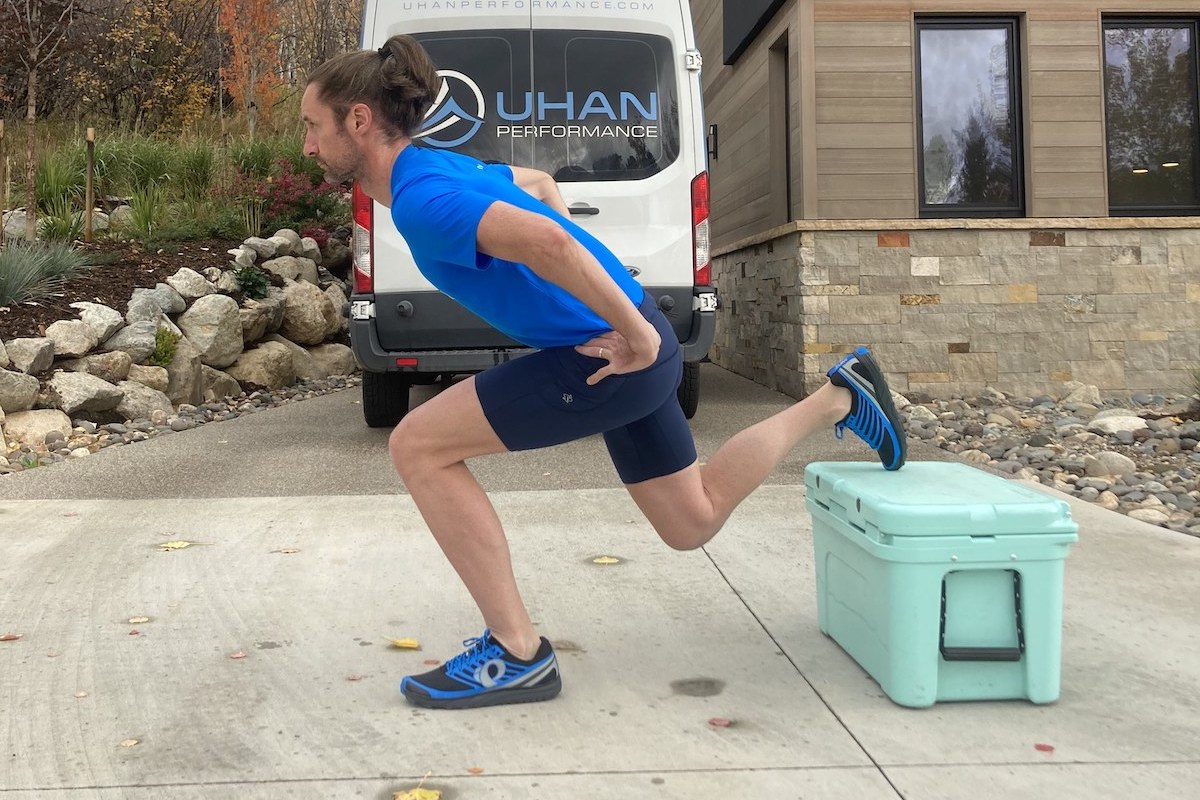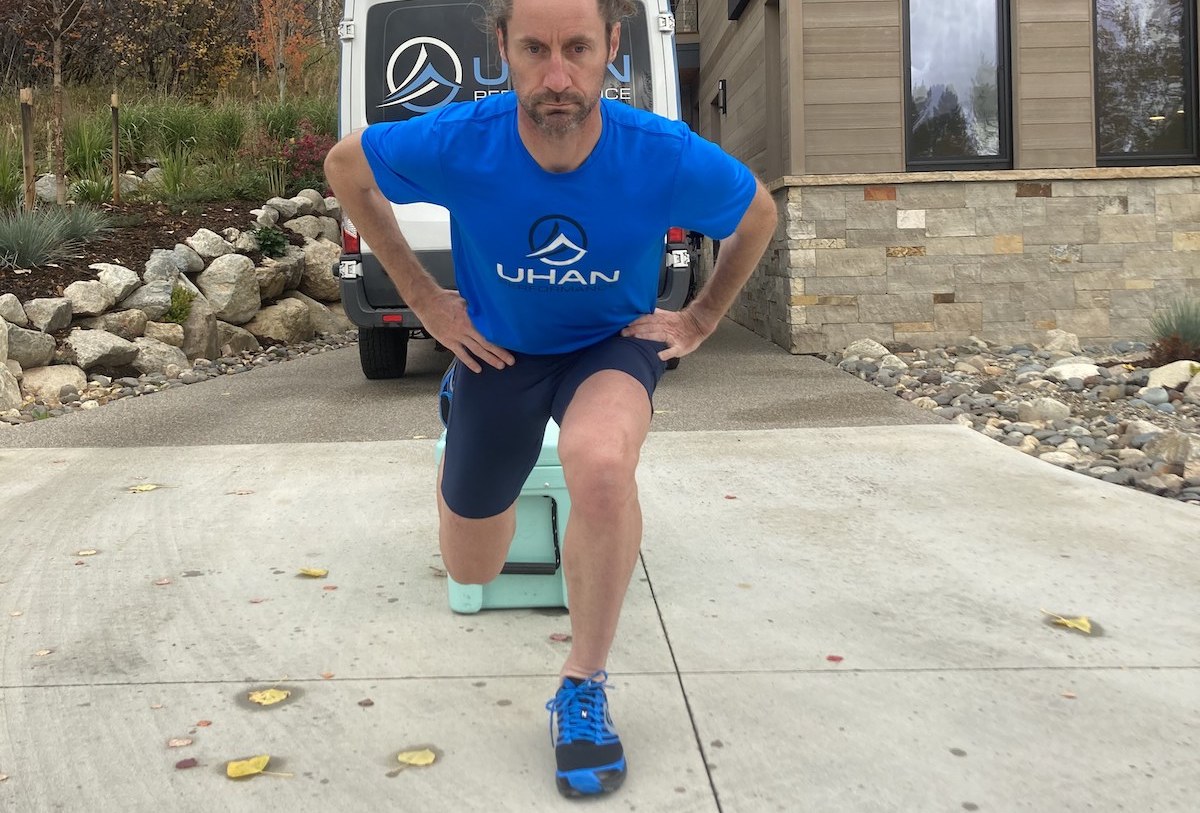 When it comes to exercise, more isn’t always better. Even as a physiotherapist, I must choose wisely, knowing my clients have limited time and energy. Thus, my favorite exercises are run-specific. They reinforce as precisely as possible the desired motions and forces of strong and efficient running.
When it comes to exercise, more isn’t always better. Even as a physiotherapist, I must choose wisely, knowing my clients have limited time and energy. Thus, my favorite exercises are run-specific. They reinforce as precisely as possible the desired motions and forces of strong and efficient running.
The split squat is chief among them. It’s my favorite hip-strengthening exercise, but it is also the most challenging in execution and because of its requisite strength. Don’t let that deter you! This article is my roadmap for what the split squat is, why you should do it, and how to best execute it.
Defining the Split Squat
The split squat is a staggered-stance squat exercise similar to a lunge. I suspect it is called a squat because of the elevated rear-leg position. Besides shifting the body mass over the forward leg, the elevated position also promotes a hip-hinged, forward trunk position akin to a squat.
The start and finish position is akin to the running posture, with a slight hip hinge and bent knee, putting the chest over the knee, and knee over the toes. The exercise movement is a controlled lowering of the body toward the ground, moving primarily at the hip point in a squat motion. The return involves a hip extension movement, elevating the body back to the start position.
The Run Specifics of the Split Squat
Splits squats provide terrific run-specific strengthening for the following reasons:
- Staggered positioning. This mimics the reciprocal, single-leg loading of running. The standing leg is in the mid-stance position of running, while the rear, elevated leg is in a swing phase.
- Landing stability. The split squat position mimics the single-leg stance stability required for efficient running, with a stacked trunk atop a neutral pelvis and efficiently aligned leg.
- Hip-centric propulsion. The gluteal muscles of the stance hip are the prime movers of the split squat. They work eccentrically during lowering, which both mimics and exaggerates the landing and stance phase of running. The return involves a strong contraction of the glutes, extending the hip to elevate the body, similar to how the glutes perform to propel the body forward.
Split Squat Form Focus
What makes or breaks the effectiveness of any exercise is in its execution. Proper form – and maximal run specificity – requires attention to a few crucial details, and this is especially true for the split squat. Focus on these key areas for the best effect:
Posture
Any quality running-specific exercise should reinforce neutral posture, where all body segments are stacked atop each other in a neutral, balanced position. This includes the head and neck, trunk, and pelvis. This alignment must then be maintained as you ease into a hip-hinged, forward position.

Physiotherapist and author Joe Uhan demonstrates the proper “up” position of the split squat, preserving the hip hinge. All photos: Joe Uhan
Hip Hinge
Hip hinge is the key distinction between a split squat and a lunge. The rearward orientation of the pelvis behind the trunk is facilitated by the rear leg’s elevated position on a box or bench. Maintaining hip hinge position during the lowering and return is a key element of successful execution and hip strengthening.
Hip Loading
This is the most challenging – and often most overlooked – element of the split squat. Proper hip loading, which places the body weight into the hip joint and musculature, is dependent on the position and angulation of the pelvis in two planes.
First, the frontal plane: the pelvis should be level in the forward view. Placing the hands on the hips will help orient the pelvis to a level position. The second, transverse plane is more tricky. Proper loading in this plane requires the stance side pelvis be sufficiently rearward oriented.
Deficient hip loading can be seen as a pelvic escape, where the pelvis moves away from the work in the stance leg. In the frontal plane, this means that the pelvis or “steering wheel” turns away from the stance leg, elevating on that side. And in the transverse plane, the pelvis or “washing machine” will twist forward. Firmly placing the pelvis downward and rearward on the stance leg is crucial to properly loading – and strengthening – the leg.
Moreover, these pelvic positions will more naturally result in efficient leg alignment. Transverse plane loading, in particular, is most crucial to keeping the knee outwardly aligned over the middle of the foot.
Foot Loading
Lastly, pay attention to balanced foot loading, where weight is equally balanced between the heel, big toe, and fifth toe.
Loading and Variations
Because efficient execution is so challenging, I recommend novice split squatters initially perform this exercise without additional resistance. Prerequisites for progression include:
- Maintaining neutral spine posture and forward hip-hinging position
- Maintaining neutral hip loading (in both planes)
- Achieving full range of motion: the goal should be to lower the body until the thigh approaches parallel to the ground
- Ability to perform at least 10 repetitions, over multiple sets, without significant post-exercise muscle soreness
Once you can do so, loading progressions may include:
- Adding dumbbell weight
- Adding barbell weight
- Small hops
Conclusion
The split squat is an excellent and challenging running exercise that promotes alignment, stability, balance, and pure propulsive power. Few runners harness its full power, but with discipline, attention to detail, and hard work, it can transform your running. Good luck!
Call for Comments
- What exercises do you do to strengthen multiple parts of your body at once?
- Are you a fan or foe of the split squat?


